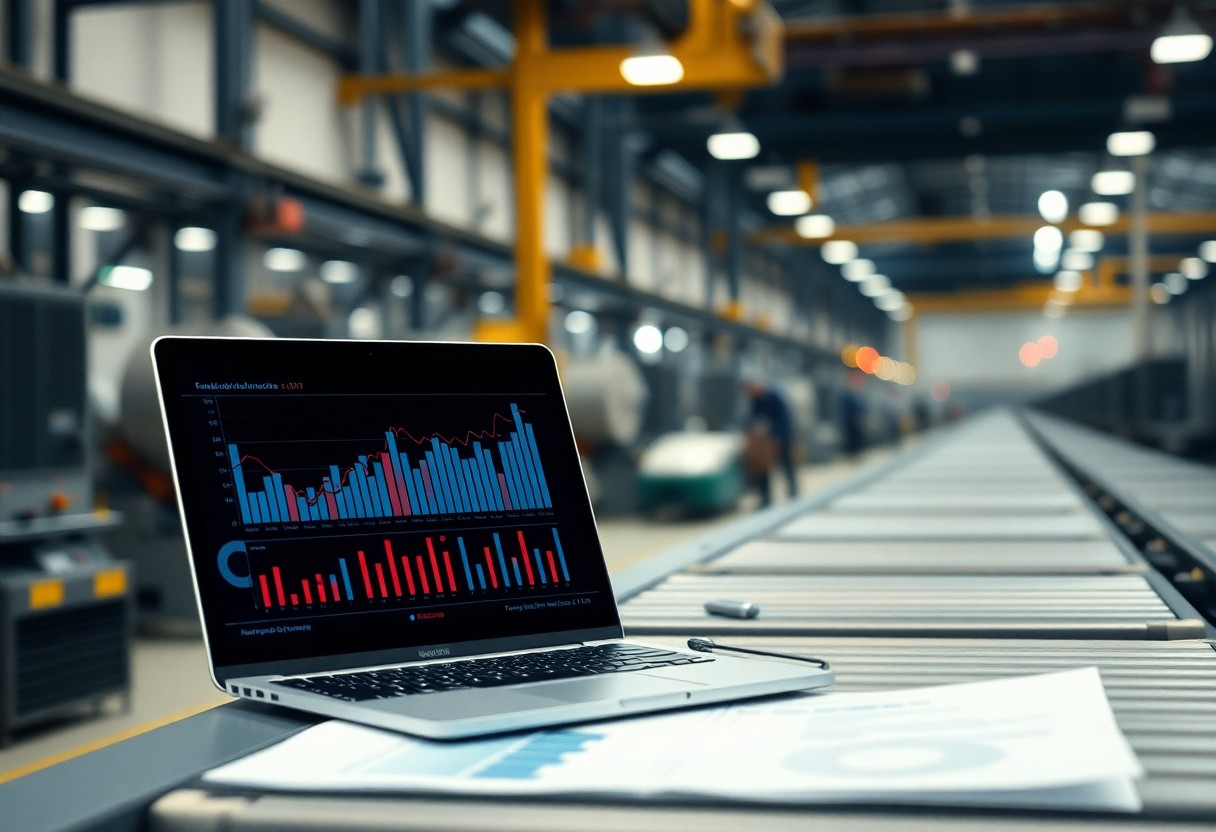PC Bottleneck Calculator
Last Updated on January 6, 2025
As you navigate the complexities of system analysis, identifying bottlenecks is imperative to optimizing performance. You will learn to pinpoint the weakest links in your system, which can significantly impact productivity and efficiency. By understanding how to calculate bottlenecks, you can make informed decisions to enhance your system’s overall performance and minimize potential roadblocks that may hinder your progress. You will be guided through a step-by-step process to calculate bottlenecks effectively.
Key Takeaways:
To understand how to calculate a bottleneck, consider the following points:
- The identification of bottlenecks involves analyzing the production process and identifying the stage that limits the overall output or throughput.
- Calculating the bottleneck involves determining the maximum capacity of each stage in the process and comparing it to the demand on that stage to find the point of constraint.
- Once the bottleneck is identified, optimization techniques can be applied to increase efficiency and improve productivity by focusing on the constraint and making adjustments to maximize output.
Identifying Bottlenecks
A thorough analysis of your system is necessary to identify bottlenecks. You will need to evaluate your system’s performance and efficiency to determine where improvements can be made.
Recognizing System Constraints
Identifying the limitations of your system is the first step in recognizing system constraints. You should investigate your system’s capacity and resources to understand where bottlenecks may occur.
Analyzing Performance Metrics
After collecting data on your system’s performance, you can begin analyzing performance metrics to identify trends and patterns. You should look for inefficiencies and areas where your system is not operating at optimal levels.
Also, as you analyze performance metrics, you will need to consider variations in demand and how they impact your system’s performance. You should be aware of potential roadblocks and have a plan in place to mitigate risks and ensure your system continues to operate smoothly and efficiently.
Data Collection
Some of the most effective methods for calculating bottlenecks involve gathering data on your system’s performance. You will need to collect information on the input and output rates of each process, as well as the capacity of each component. This data will help you identify the weakest link in your system.
Gathering Relevant Information
Insightful data is necessary for calculating bottlenecks. You should focus on collecting accurate and relevant data that will help you understand the flow of your system. Your goal is to gather enough information to identify the slowest process and determine its impact on the overall system.
Tools for Data Analysis
Allegedly, the right tools can make a big difference in your analysis. Along with specialized software, you can use spreadsheets and charts to visualize your data and identify trends. You should choose tools that are easy to use and provide detailed insights into your system’s performance.
Data analysis is a key part of calculating bottlenecks. Data from your system will help you identify the bottleneck and determine its cause. You will be able to use this information to optimize your system and improve its performance, which can lead to increased efficiency and productivity, and ultimately, greater success. By using the right tools and techniques, you can unlock the full potential of your system and achieve your goals.
Formulas and Calculations
Not all bottleneck calculations are created equal, and you will need to understand the different formulas and techniques to accurately identify and address bottlenecks in your system.
Basic Bottleneck Formulas
Beneath the surface of complex systems, you will find that basic bottleneck formulas are often sufficient to identify and analyze bottlenecks, and you can start by calculating the throughput and capacity of each process.
Advanced Calculation Techniques
Around the Advanced Calculation Techniques, you will find that:
- Utilization
- Efficiency
| Technique | Description |
|---|---|
| Simulation | Simulate different scenarios to identify bottlenecks |
| Linear Programming | Optimize process flow to minimize bottlenecks |
You will use these techniques to identify and analyze bottlenecks in your system.
Due to the complexity of advanced calculations, you will need to carefully consider each step of the process to ensure accurate results, and you can use:
- Simulation software
- Linear Programming tools
| Tool | Description |
|---|---|
| Simulation Software | Analyze and optimize process flow |
| Linear Programming Tools | Optimize resource allocation |
You will be able to identify and address bottlenecks in your system, and improve overall efficiency and productivity.
Interpreting Results
To effectively interpret the results of your bottleneck calculation, you need to analyze the data and identify the areas that require improvement. This will help you understand where to focus your efforts to optimize your process.
Understanding Bottleneck Impact
Bottlenecks have a significant impact on your overall productivity and efficiency, and identifying them is vital to improving your process. You will be able to see how inefficiencies are affecting your workflow and make informed decisions to address them.
Prioritizing Improvements
Before you start making changes, you need to prioritize the areas that require improvement. You should focus on the most significant bottlenecks first, as they will have the greatest impact on your overall productivity.
At this stage, you have identified the areas that require improvement and prioritized them. Now, you can start making targeted changes to address the bottlenecks and improve your process. You should monitor your progress closely and make adjustments as needed to ensure that you are getting the best possible results. By following these steps, you can optimize your workflow and achieve greater efficiency and productivity.
Optimization Strategies
After identifying the bottleneck, you can begin to develop strategies to optimize your process. You will need to analyze your system and identify areas where improvements can be made to increase efficiency and reduce waste.
Reducing Bottleneck Effects
At this stage, you should focus on minimizing the impact of the bottleneck on your overall process. You can do this by streamlining tasks and allocating resources more effectively to reduce congestion.
Implementing Efficiency Measures
About the most effective way to optimize your process is to implement efficiency measures that target the bottleneck directly. You can achieve this by automating tasks, improving workflows, and providing training to your team to enhance productivity.
Another key aspect of implementing efficiency measures is to monitor progress and make adjustments as needed. You should track key performance indicators and analyze data to identify areas where further improvements can be made to maximize efficiency and reduce costs. By doing so, you can significantly improve your overall process and achieve your goals more effectively, while avoiding potential pitfalls and minimizing risks.
Implementation and Monitoring
Now that you have identified the bottleneck, it’s time to take action. You will need to develop a plan to implement changes and monitor their effectiveness.
Planning Implementation
About the specifics of your plan, you should consider the resources needed to address the bottleneck and the potential impact on your overall process. You will need to assess your capabilities and set realistic goals for improvement.
Continuous Monitoring and Adjustment
Beside the initial implementation, you will need to track your progress and make adjustments as needed. You should be prepared to adapt to any unforeseen challenges that arise.
In fact, continuous monitoring and adjustment are important to ensuring the long-term success of your efforts. As you analyze your data and identify areas for improvement, you will be able to make informed decisions to further optimize your process and maximize efficiency. By doing so, you will be able to stay ahead of potential problems and maintain a competitive edge.
To wrap up
On the whole, you have learned how to calculate a bottleneck by analyzing your system’s components and identifying the one that limits overall performance. You can now apply this knowledge to optimize your process, increasing efficiency and productivity. By following these steps, you will be able to pinpoint and address your bottleneck, ultimately improving your entire system’s output and achieving your goals more effectively with your newfound understanding of bottleneck calculation.



